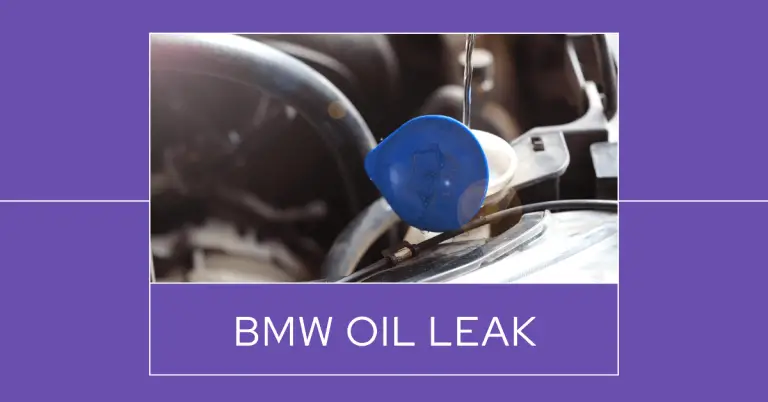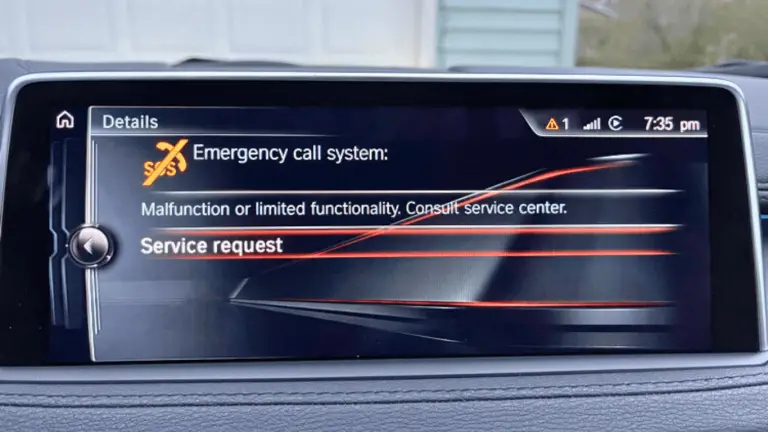BMW Transmission Fault: 9 Common Causes, Diagnosis & Repair
Has your BMW been giving you transmission troubles lately? Experiencing slipping gears, warning lights, or strange noises when shifting? You’re not alone.
BMW transmissions are notorious for developing issues over time. Diagnosing and fixing the problem early is key to avoiding costly transmission repairs down the road.
In this complete guide, we’ll cover:
- The top 9 most common causes of BMW transmission problems
- Expert tips for diagnosing transmission issues in your BMW
- Steps to flush contaminated fluid and conduct routine maintenance
- When to repair, rebuild, or replace your BMW transmission
- DIY fixes and when to call in a transmission specialist
Plus, we’ll outline specific solutions for BMW drivers to get shifting smooth again.
What Causes BMW Transmission Problems?
BMW automatic and manual transmissions are engineered for sporty driving, but they can still suffer wear and tear over miles of use. Here are the most common reasons you may experience BMW transmission problems:
1. Low Transmission Fluid Level
The #1 cause of BMW transmission issues is low fluid level. Transmissions require a specific amount of fluid to flow properly and cool internal components.
Checking fluid levels regularly and topping off when low is crucial for preventing damage. Burnt, leaking, or dirty fluid can also indicate an underlying problem.
2. Faulty Solenoid Valves
Electrical solenoid valves control the flow of transmission fluid for gear shifts. If solenoids fail, you may experience:
- Harsh gear changes
- Transmission slipping
- Complete gear failure
Faulty solenoid wiring, blown fuses, or wear and tear cause these issues.
3. Leaking Gaskets or Seals
The transmission case and points where axles enter are sealed by gaskets and rubber seals. If these leak, gears can slip and fluid can drain out leading to overheating.
Leaks often originate from dried out, cracked seals. Catching leaks early prevents bigger repairs.
4. Worn Clutch Packs
Wet clutch packs control shifts between gears. BMWs have multiple clutch packs that gradually wear from high RPMs and heat cycling.
Once the clutch material thins, plates can slip and cause gear lag, especially when cold. A rebuild or replacement is needed in severe cases.
5. Bad Transmission Control Module
The TCM is the transmission’s onboard computer controlling solenoids and monitoring sensors. If it fails, communication errors lead to shifting problems.
Fault codes pointing to a bad TCM require replacement and/or reprogramming of the module.
6. Faulty Speed Sensors
Input and output speed sensors tell the TCM your engine and wheel speeds. Bad data from a failed sensor causes shift timing issues.
Inspect sensor wiring for damage. Swap in new sensors if cleaning or tightening connectors doesn’t help.
7. Broken Transmission Cooler Lines
Transmission fluid passes through external coolers to prevent overheating. Cracked or leaking cooler lines will drain the fluid and cause the transmission to run hot.
Look under your BMW for signs of leaking fluid at the transmission cooler and fittings. Have worn lines replaced immediately.
8. Slipping Transmission Bands
Automatic transmissions use metal bands to engage drive gears. These bands can wear and lose grip from high mileage use.
When a band slips, you’ll notice flared shifts between gears and loss of acceleration. Adjusting or replacing bands may fix it.
9. Contaminated Fluid
Foreign particles, dirt, water and burnt fluid will all contaminate your transmission over time. This speeds up internal wear and clogs valves.
Performing regular fluid changes flushes contamination and maintains smooth shifts. Use only OEM fluids in your BMW.
Symptoms of BMW Transmission Problems
How can you tell if your BMW is having transmission problems? Here are the most common symptoms:
- Delayed Gear Engagement – You press the gas but there’s a long pause before it shifts and accelerates into gear. Indicates low fluid, worn clutches or bad solenoids.
- Transmission Slipping – RPMs flare as the transmission slips when shifting. Feels like you’re pressing the gas but not picking up speed. Signals worn internal components.
- Warning Lights – A blinking “D” gear indicator or transmission warning light means a fault code is stored. Requires diagnosis.
- Burning Smell and High Temp – Transmission fluid overheating smells burnt and will show high on the temperature gauge. Sign of low fluid or cooling issues.
- Vibration When in Gear – Humming, shaking or vibration when sitting in gear points to worn mounts, defective torque converter or other internal damage.
- Unusual Noises – Grinding when shifting, clunking in gear, or whining in neutral all indicate problems. Have inspected immediately.
- Leaking Fluid – Look under BMW for red fluid leaks near the transmission case, seals, and cooler lines. Have leaks addressed ASAP.
- Check Engine Light – Transmission fault codes usually trigger the check engine light. Scan for codes to pinpoint the issue.
Don’t ignore these warning signs. Transmission problems tend to worsen over time if left untreated. Catching issues early is the key to simpler and more affordable repairs.
How to Diagnose BMW Transmission Problems?
Want to pinpoint if your BMW’s transmission is faulty before breakdowns occur? Here is a 4 step process for diagnosing issues:
Step 1 – Scan for Transmission Fault Codes
Connecting an OBD2 scanner tool and reading BMW transmission fault codes is your first step. Codes point to specific sensors, solenoids or components causing problems.
Look up BMW trouble codes to research likely repairs. Common codes include:
- P0700 – Transmission control system fault
- P0716 – Input speed sensor malfunction
- P0730 – Gear incorrect ratio malfunction
- P0755 – Shift solenoid valve malfunction
Step 2 – Check Transmission Fluid Level and Condition
Check your BMW transmission fluid using the dipstick under the hood (if equipped). Level should be within the hot range after driving when fluid is warm.
Fluid should appear red, not brown or black. Burnt smelling fluid indicates overheating damage and the need for a flush.
Step 3 – Look Underneath for Leaks
Inspect the underside and back of transmission housing for any red fluid leaks. Also look along the steel lines running to the transmission cooler.
Even small leaks allow damaging contamination and lead to ongoing problems if not promptly fixed.
Step 4 – Test Drive and Notice Shifting Behavior
Take your BMW for a 20+ minute test drive through all gears, speeds and RPMs. Accelerate moderately to detect issues shifting or disengaging gears under load.
Does the transmission hesitate, flare, or slip when shifting? Do you hear any odd noises or feel vibration? Make notes on any misbehavior.
Bringing your notes to a BMW specialist will aid diagnosis of your specific issues. Now let’s look at how to resolve the most common causes.
How to Fix BMW Transmission Problems?
Repairing your BMW transmission problems quickly is key to avoiding pricier repairs down the road. Here are solutions to common issues:
Fixing Low Transmission Fluid Levels
Step 1) Look up proper procedure to check fluid level based on your BMW model and transmission type. Level should fall within hot range.
Step 2) Add approved BMW transmission fluid slowly until level reads in middle of hot range. Don’t overfill.
Step 3) Start engine, run through gears and recheck level. Top up if needed.
Step 4) Scan for leaks if low fluid is an ongoing issue. Seal leaks promptly to prevent damage.
Step 5) Change filter and flush contaminated fluid if necessary to restore smooth shifts.
Tip: Consider a transmission fluid extractor that makes fluid changes easier on BMW models.
Testing and Replacing Faulty Solenoids
Step 1) Locate transmission solenoids using a diagram for your BMW model. Often under a removable valve body.
Step 2) Unplug and check connectors for dirt, damage or corrosion. Clean and reconnect.
Step 3) Perform resistance tests on solenoids based on spec. Replace if out of spec.
Step 4) Inspect fuse box and relay for blown transmission solenoid fuses causing power loss.
Step 5) Clear any pending fault codes after solenoid replacement and test drive to confirm fix.
Tip: Consider a complete BMW solenoid kit as an affordable solution to multiple shifting faults.
Replacing Worn Seals and Gaskets
Step 1) Clean transmission housing and visually inspect for leaks at axle seals, housing, pan gasket or cooler lines.
Step 2) Feeler gauge can measure seal wear. Replace if gap exceeds specifications.
Step 3) Follow BMW procedures to drop the transmission pan and replace leaking gaskets. Refill with fluid.
Step 4) For axle seals or other external leaks, replacement often requires transmission removal. Not DIY recommended.
Tip: Always use OEM or OEM equivalent seals and gaskets to avoid leaks from inferior aftermarket parts.
Rebuilding Worn Clutch Packs
Step 1) Remove and disassemble transmission following BMW shop manual procedures. Mark components and make notes.
Step 2) Inspect clutch discs, steels, bands, drums, bearings and other internal parts for wear, scoring or discoloration.
Step 3) Soak transmission cases and components in solvent wash to remove debris.
Step 4) Replace damaged or worn parts with BMW OEM or reputable aftermarket spares. Never reuse seals or gaskets.
Step 5) Carefully reassemble using torque specs in manual. Don’t force anything that doesn’t fit!
Tip: Consider having a BMW specialist handle transmission disassembly, rebuild and reinstallation unless you have advanced DIY skills.
Swapping Damaged Sensors and Modules
Step 1) Locate transmission control module, speed sensors or other indicated faulty electrical components.
Step 2) Unplug and disconnect sensors or TCM module. Inspect and clean connections for corrosion or damage.
Step 3) Order new OEM sensors or module from BMW dealer or supplier. Avoid cheap aftermarket parts.
Step 4) Plug in replacement part. Clear codes and test drive. Errors should be gone if fix successful.
Tip: Codes pointing to a bad TCM may also require dealer programming and initialization to sync with the new module.
Flushing Contaminated BMW Transmission Fluid
Step 1) Extract old fluid completely using a fluid exchange machine or manual pump method.
Step 2) Install new BMW filter and pan gasket. Refill fluid to proper level with approved fluid only.
Step 3) Drive through all gears and recheck fluid after it warms up. Top up as needed.
Step 4) Repeat flush procedure until fluid drained out runs clear. Old fluid takes multiple changes to fully extract.
Step 5) Fix any leaks allowing contamination afterwards. Change fluid at shorter intervals to keep clean.
Tip: Consider adding a quality transmission additive or conditioner during the last fill to revitalize worn components.
When to Repair, Rebuild or Replace Your BMW Transmission
How do you know when it’s time to rebuild or replace your BMW’s transmission?
- Minor repairs – Simple fixes like topping fluids, adjusting bands, or replacing seals, gaskets or solenoids can be done to extend transmission life.
- Rebuild – If you have multiple worn components but the transmission still functions, a rebuild kit with new clutches, steels, seals etc. may be worthwhile.
- Replacement – If the transmission is completely broken with no movement or multiple mechanic failures, replacement with a used or remanufactured transmission is likely required.
Compare repair quotes to the value of your BMW. Costs exceeding 50% of the vehicle’s value often make replacement a better option.
For simpler jobs like fluids, filters, and external seals, DIY repairs can save money when you have the tools and skills. More involved repairs are best left to experienced BMW specialists.
Either way, acting quickly gives you the best odds of affordable repairs and avoiding complete transmission failure down the road.
Protect Your BMW Transmission for the Long Haul
While BMW transmissions are well engineered for performance, they remain susceptible to wear over time. You can minimize problems by:
- Checking fluid level and condition monthly
- Addressing leaks promptly to prevent contamination
- Flushing fluid every 60K miles to prevent buildup
- Driving gently and avoiding excessive RPMs when cold
- Tuning up transmission with cleaners and additives
Taking care of your BMW transmission will reward you with years of smooth, responsive shifting. But if issues eventually pop up, use the tips in this guide to accurately diagnose problems and get your BMW shifting gears properly again.
Conclusion
BMW transmissions are built for the driving experience the brand is famous for. But fluid problems, leaks, faulty valves, worn clutches and other issues can still crop up over miles of driving.
Catching problems early based on warning signs and fault codes is key to simpler repairs. Addressing low fluid levels, sealing leaks, replacing worn parts, and flushing contamination will go a long way to restoring smooth operation.
For more involved repairs, the experts at your local BMW shop have the specialized tools and skills to properly fix BMW transmission issues and get performance back to factory standards.
Does your BMW still have lingering transmission problems after repairs? Have you faced costly transmission repairs in your BMW? Share your experiences in the comments below!







